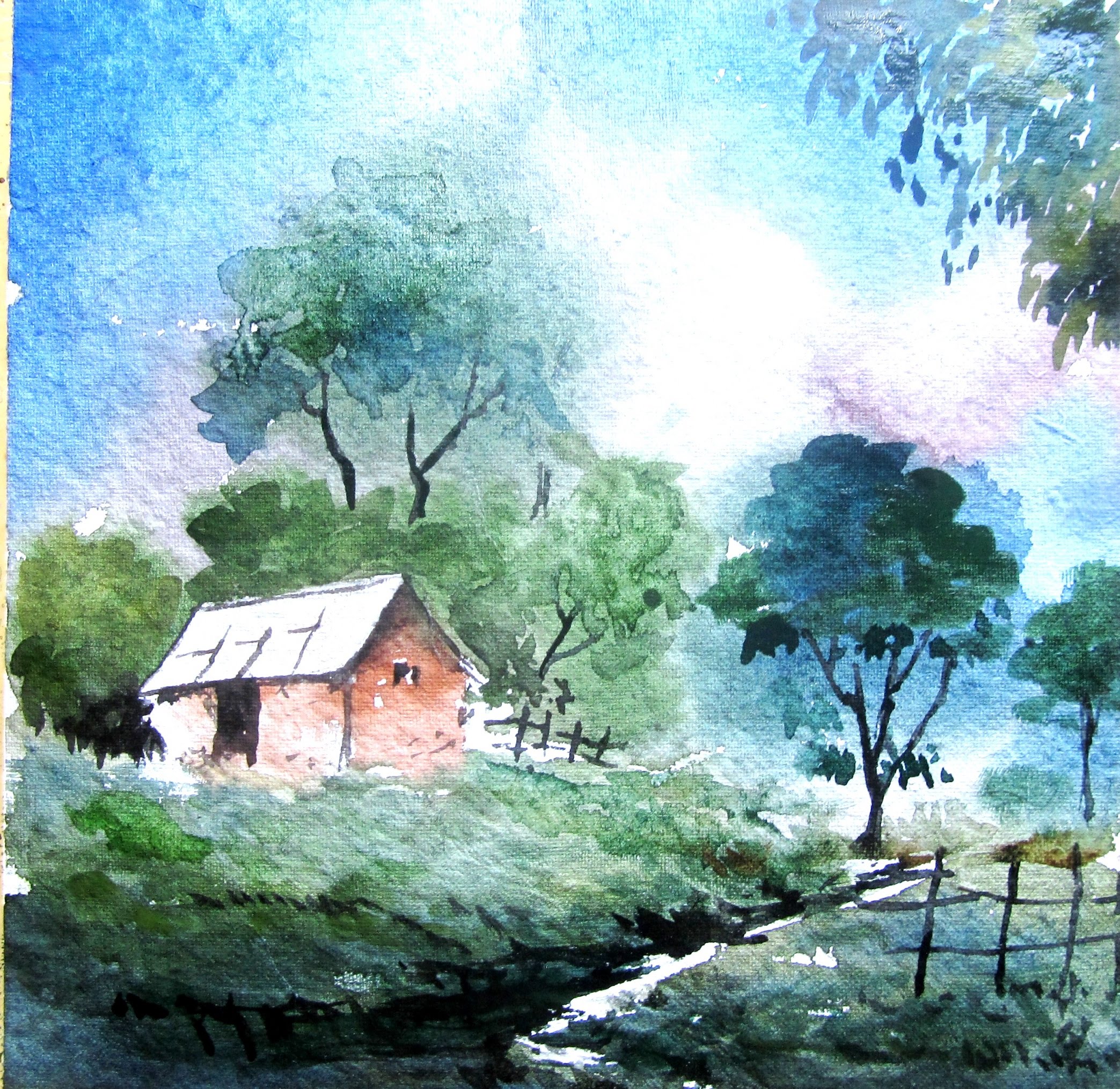

Step 3: Creating the Water and Background This action will aid in the development of the wet-on-wet approach, which is useful for backgrounds.

We’ll use a rather broad brush to paint water equally across the entire page. This is when we moisten the entire page to prepare the paper’s surface. Just bear in mind that the larger it is, the closer it will appear, so keeping these features modest is a smart idea. Along the horizon line, you may create any type of environment you choose. So, to the best of your ability, evaluate the source image for this element, since getting these details properly might help the painting a lot.Īfter that, we can start adding generic greenery and city-type forms along the horizon line. When sketching the dock’s shadow, keep in mind that shadows are frequently the same form. Another essential feature is the dock’s reflection in the water, which we may now sketch in. So, let’s try to include some intriguing details on the dock that will help it stand out in the artwork. We want to make certain that there is something attractive to look at on the pier once more. What we can do is move back and forth from our input images and design until we are pleased with the form and viewpoint of the pier. We’ll be fine as long as we design something intriguing and the dimensions are appropriate to inspire our paintwork. We want to keep the proportions perfect, but we may experiment with how many parts of the pier we want to show. The dock contains fundamental beams that support its weight, as well as the beams that hold a railing, as we can see from our source picture. It’s usually a good idea to start with the horizon line since it provides us a solid idea of how far out the pier should extend. Let’s start by drawing the scenario in our source picture as best we can using a pencil. We may take up the task of literal replication with watercolor, but another fantastic method to do watercolor is to reinterpret your original image in your own unique style. In this lesson, we will create an amazing scenario depicting a pier at sunset in the late afternoon. So, without further ado, let’s get started on this easy watercolor landscape lesson. This aids in the development of the watercolor scenery and adds depth to our watercolor landscapes. This means we’ll start with the backdrop, then go on to the center area, and eventually to the foreground. It’s just a method of arranging colors in a way that we can comprehend any scene. It’s crucial to grasp how the watercolor media interacts with water.

We describe an atmosphere through a sequence of color combinations in watercolor scenery and watercolor landscapes. So, now that we’ve got everything ready, let’s get started.Īn Easy Watercolor Landscape Lesson for Beginners We’ll be creating a bright and untidy landscape in this lesson. Remember that a watercolor lesson may be completed in a variety of ways using a variety of approaches. Let’s get started with his guide now that we have our color, paper, and water all set up. We’ll be sketching from a picture on an iPad in this lesson, but you may use whatever device you have, or print out the image if you like. We’ll also want to ensure we have some fresh water on hand, as well as another for rinsing our brushes during the task.įinally, let us double-check that we have our colors on hand and ready to use. This will also create a lovely white border surrounding our work, which will give it a more competent appearance. This will allow us to move our colors through the paper’s edges. This tape can be applied to all four edges of the paper, overhanging the paper by one to two centimeters. Then we can start cutting the scotch tape both vertically and horizontally along the course of our paper. What we need to do is make sure our paper is flat and even. Source Image and Preparation Work for Your Easy Watercolor Landscape 4.3 How Does Painting in Watercolor Work?.4.2 Are There Various Watercolor Techniques?.4.1 How Do Artists Produce Easy Watercolor Landscapes?.3 Helpful Tips for Your Easy Watercolor Landscapes.2.8 Step 8: Creating the Details of Your Watercolor Landscapes.2.7 Step 7: Coloring the Horizons of Your Nature Paintings With Watercolors.

2.6 Step 6: Painting the Watercolor Landscape’s Dock.2.5 Step 5: Creating the Dock’s Reflection.2.3 Step 3: Creating the Water and Background.2 An Easy Watercolor Landscape Lesson for Beginners.1 Source Image and Preparation Work for Your Easy Watercolor Landscape.


 0 kommentar(er)
0 kommentar(er)
